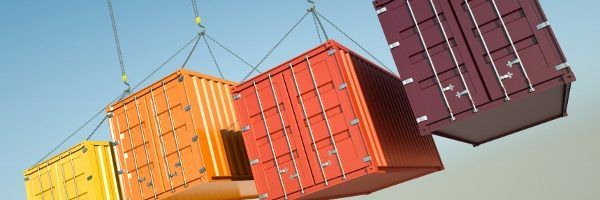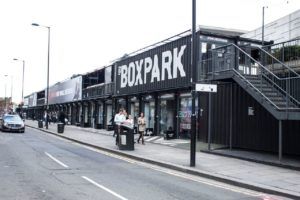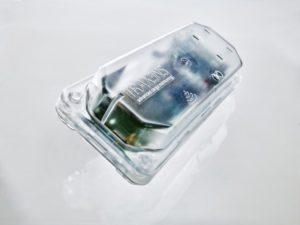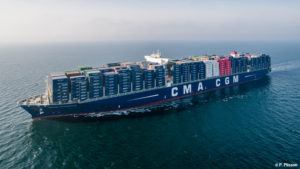Where’s my box?

Just-in-time inventory management is hampered by the difficulty of tracking shipping containers and the unpredictability of marine transit. French company Traxens believes the opportunity lies in making containers “smart.”
50 years ago container shipping changed the world. By making maritime shipping cheap, it allowed companies to move manufacturing away from population centres to areas where land and labour were cheap.[1]
But since then, not much has changed with the basic container, which is often referred to as a “dumb box.” Containers are hard to track in the logistics chain and are vulnerable to all kinds of delays — from port congestion to adverse weather conditions. Compounding the difficulty of tracking containers is the unpredictability of marine transit: container ship average on-time performance in March 2016 was a poor 68%.[2]
Why does container tracking matter?
Accurate tracking of supply chains is critical to improving just-in-time inventory management. If a manufacturer has limited visibility on when and what state goods arrive in, it creates uncertainty in supply and production forecasting. To address uncertainty, the manufacturer will hold more inventory. And holding more inventory results in higher costs. Accurate tracking can therefore reduce costs by increasing visibility.[3]

Why is tracking so difficult?
Accurately tracking containers in transit has historically been very difficult as most containers are only tracked as they pass through key infrastructure hubs.[4] While refrigerated containers are powered and can connect to communications networks to broadcast their location, standard goods containers do not have access to power. Installing and maintaining separate tracking technology has historically been expensive and only considered relevant to shippers of high-value cargo.[5] Additionally, containers are often left empty at their destination locations due to asymmetric trade flows, making the installation of expensive tracking equipment impractical.[6]
What can be done to improve the situation?
French company Traxens believes the opportunity lies in making containers “smart.”

Traxens has developed a new container monitoring and coordination system. A low-cost hardware device with limited energy consumption is built into a container during the manufacturing phase and stays with the container for the entirety of its working life. The device communicates with the “Trax-Net,” a narrow bandwidth meshed network comprised of other containers in the vicinity of the device. Such a meshed network can encompass an entire container ship. The network then connects to an available communications network, such as the container ship, in order to access the internet. When the network is not based on a ship, it accesses GSM or satellite communications.
In addition to communicating whether it is on schedule, a smart container can also provide other valuable information to shippers of cargo. If the container experiences a bump or if its doors are opened during transit, the container registers when and where this happened and relays this to the shipper. Knowing there has been damage or theft, the shipper can take appropriate action to avoid supply chain disruption.
Traxens intends to sells this container monitoring service to shippers as a standard add-on during the container leasing process. And once it has collected extensive information on shipments, Traxens will use big data techniques to analyse the efficiency of its clients’ supply chains and provide optimisation advice.
Coming soon to a port near me?

In order to roll out its container monitoring devices and associated services, Traxens will need buy-in from the various constituents in the industry including the container manufacturers, lessors, shipping lines and freight forwarders. Who should Traxens approach first? Clearly the data gathered by the containers is most useful to end customers, but who should pay for the technology?
As it currently stands, MSC Mediterranean Shipping Company and CMA CGM, which on a combined basis transport approximately 25% of the world’s shipping containers, have announced plans to roll out Traxens devices across their fleets.[7] CMA CGM has also taken an economic interest in Traxens and has stated that it wants the technology to become industry standard. In October 2016, the Traxens system was rolled out on the CMA CGM Bougainville, a 18,000 TEU capacity container ship.[8] Traxens is also working with container manufacturers to ensure its hardware is included in their containers.
Yet with significant overcapacity in shipping, is the industry prepared and financially able to make investments to roll out a new “industry standard” technology? And what role will container shipping play in the future? If robotics and 3D printing are potentially reducing the global wage arbitrage, we may be at the tail end of the container era.[9]
(760 words)
[1] Levinson, M. (2006). The box: How the shipping container made the world smaller and the world economy bigger. Princeton, NJ: Princeton University Press.
[2] http://www.cargobusinessnews.com/news_releases/Releases/Drewry-Liner-reliability-bucks-downward-trend.pdf
[3] https://www.traxens.com/about-us/vision-and-mission.html
[4] http://www.informationweek.com/rfid-helps-to-track-cargo-containers/d/d-id/1031651?
[5] http://www.joc.com/international-logistics/cool-cargoes/new-reefers-promise-faster-more-accurate-cold-chain-monitoring_20160306.html
[6] Boile, Maria, S. Theofanis, and Neha Mittal. “Empty intermodal containers—a global issue.” Proceedings of the 2004 Transportation Research Forum Annual Forum. 2004.
[7] http://www.globaltrademag.com/global-logistics/msc-joins-cma-cgm-backing-traxens
[8] https://www.ajot.com/news/cma-cgm-bougainville-is-the-first-container-ship-to-have-in-built-connected
[9] https://www.innosight.com/insight/when-disruption-is-not-an-option-dire-straits-for-the-shipping-business/



What an interesting innovation. Railroads have long struggled with a similar problem- how to track the many hundreds of thousands of cars in their network so as to properly optimize their scheduling and track their progress? They first experimented with optical tracking of bar codes on freight car sides before moving to low-power RFID tags, which are now fairly universal throughout the industry [1]. But container shipping is that much more dominant for international trade and faces the added challenge of having long periods at sea with access to minimal communications infrastructure. The satellite communication they use which you discuss seems like the logical answer to this problem.
You raise a good question about costs- would shipping companies view the costs of these devices as worth the savings in time and increased information flow they would yield? I would think so, especially as it would seem to help significantly with the bullwhip effect, but there is an extremely large number of containers that would need to be retrofitted, and as we know, companies often make short term money-saving decisions at the expense of their long term interests. While the Baltic Dry Index (the main shipping price indicator) has risen somewhat in the aftermath of Trump’s election [2], it is still historically very low and I wonder if shippers might make the calculation that it’s easier for them to just throw in a few more containers at these rates rather than make the enormous investment necessary to upgrade containers. Don’t get me wrong; I think this is a fantastic innovation and the fact that MSC/CMA CGM are investing in it is a very good sign in my mind; the point I’m making is rather that, if I were Traxens, I would try very hard to make the case to my customers that the long-term cost savings and increased information on the location of my shipments is easily worth whatever the relatively small upfront costs of installation are likely to be. As we saw in the Barilla case, even if the benefits of a change in the supply chain are very clearly and easily demonstrated, you still have to demonstrate that value to each stakeholder in the chain before you can make the change; this is the challenge that Traxens will now face.
[1] Thompson, Keith. “AEI Data Tags and Readers”. Trains Magazine Online. 1 May 2006. http://trn.trains.com/railroads/abcs-of-railroading/2006/05/aei-data-tags-and-readers Retrieved 19 November 2016.
[2] Dieterich, Chris. “‘Shipping Gets Weird’: Shares Surge as Analysts Struggle for Explanations”. The Wall Street Journal. 16 November 2016. http://blogs.wsj.com/moneybeat/2016/11/16/shipping-gets-weird-shares-surge-as-analysts-struggle-for-explanations/ Retrieved 19 November 2016.
Given my limited knowledge of the shipping industry, your post was an incredibly informative read. Given that innovation in the industry has been essentially dormant in the past 50 years, the Traxen’s “TRAX BOX” technology could be a revolutionary product. Beyond the supply chain benefits and information flow improvements that you clearly indicated, I am intrigued at what Trax Box could mean in terms of reducing pirating and theft.
Cargo theft remains a prominent issue. In the United States, an estimated $30 billion in cargo is stolen annually, with thieves exporting stolen goods to markets in South America such as Venezuela, Colombia, Brazil, Argentina, etc. to be sold on the black market [1]. Given that Traxen technology has GPS-esque capability, can the technology be taken one step further beyond just notifying the shipper of theft? Can Traxen be creatively embedded into boxes and used to track the complex distribution networks of cargo pirates? Perhaps the mere existence of Traxen will dissuade theft more than before or incentivize pirates to drive-up their own technical complexity. Although outside the immediate scope of Traxen’s supply chain objectives, I wonder if there are other applications of this pioneering technology.
[1] http://www.inboundlogistics.com/cms/article/the-cargo-theft-threat/
Amazing post Sander.
I remember when we had to wait for 4 months for an equipment from Switzerland to arrive in a container only to realize that the equipment is damaged and we potentially delayed > 8 months of our product launch. Do you have information on how much does this connected system cost? Instead of targeting container/shipping companies, I think it will be an amazing idea for Traxens to target the end user of the ends who get tremendously impacted by delays/state of goods. (and make the monitoring system modular for the container) The end user can then negotiate with the freighting company to install this system at an additional charge.